Is there such thing as a feminine – that is, exclusively female – aesthetic? This is the question posed by German writer Silvia Bovenschen in her aptly titled 1976 essay ‘Is There a Feminine Aesthetic?’, which explores the history of western culture’s attempts to exclude, assimilate and differentiate art made by women.
Bovenschen posits that what we might refer to as ‘traditional’ women’s arts – cooking, pottery, cosmetics, conversation – ought to be located within a ‘pre-aesthetic’ realm of functional domesticity where women’s creative energies were shunted off, rendered inferior by their inability to ‘break loose and initiate communication’ with the wider world. She asks: ‘what would happen if someday we cleared out this realm and opened it…What if we alternated painting our faces with painting on canvas? What if we turned recipes into poetry?’ What if we gave women the freedom publicly to discover and communicate their own voices as artists?
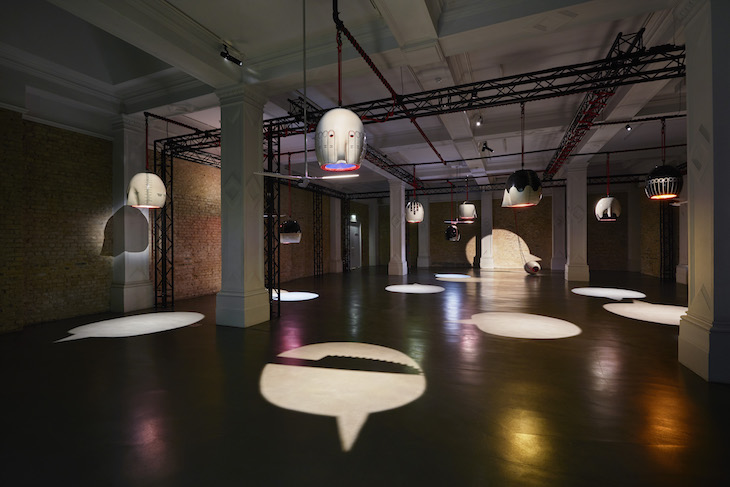
Emma Hart, ‘Mamma Mia’, installation view, Whitechapel Gallery. Photo: Thierry Bal
Established nearly three decades later in 2005, the Max Mara Art Prize for Women conducts a practical investigation into a similar question, asking what the recipients of its award might be capable of, enabled to ‘develop their potential with the gift of time and space’. The winner of the biannual art prize is given a six-month residency in Italy in order to realise a new project, which is then presented in a solo exhibition at the Whitechapel Gallery in London (and touring to the Collezione Maramotti in Reggio Emilia, Italy).
For British artist Emma Hart, winner of the prize’s sixth edition, the gift of time and space seems to have proven invaluable. Hart’s installation ‘Mamma Mia!’, which recently opened at the Whitechapel, combines meticulous craft and extensive research with an instinctive understanding of atmosphere. The installation is staged in a single gallery, in a darkness punctuated by a series of hot white spotlights projected from beneath the shade of eleven black-and-white ceramic objects.
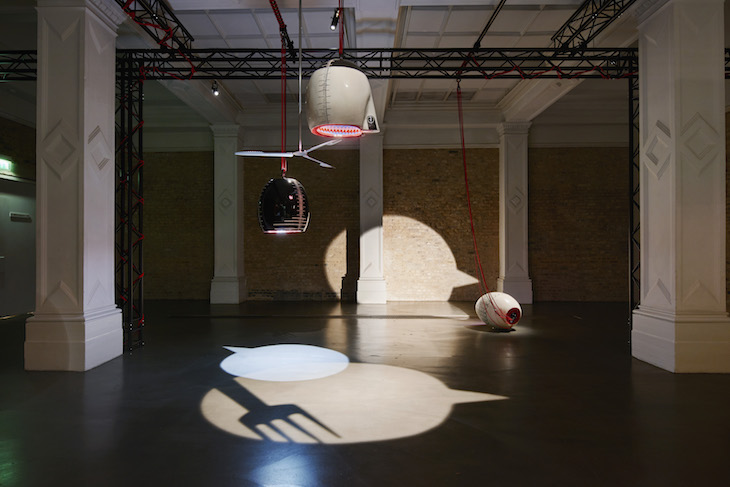
Emma-Hart-Installation-View-3-Photo-Thierry-Bal Emma Hart, ‘Mamma Mia’, installation view, Whitechapel Gallery. Photo: Thierry Bal
Ten of these rounded, open forms are suspended mid-air, hanging by red rope from a scaffold. The eleventh lies upended on the floor, its rope hung slack, projecting its speech bubble-shaped spotlight onto the facing wall. It is impossible to identify or name these sculpted shapes, dysfunctional lampshades in the shape of upturned ceramic jugs that also seem to resemble a series of floating human heads – broken gloriously loose from any pre-aesthetic realm of functional domesticity.
Indeed, throughout the installation, markers of domestic space – the kitchen in particular – recur in uncanny new contexts, from measuring cup lines scored on the exterior of the ceramic forms to the fans hovering beneath them, and blades in the shape of over-sized cutlery. Playfully absurd, these flying knives, forks and spoons also carry with them more than a hint of aggression, as they silently stab and slice their way through the air.
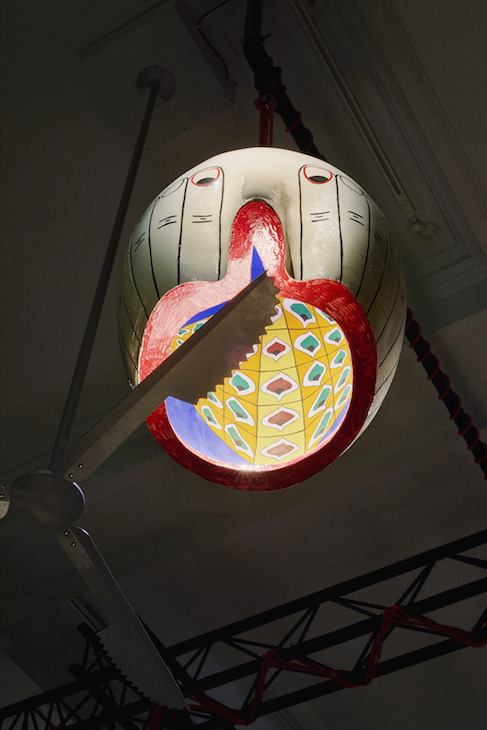
Emma Hart, ‘Mamma Mia’, installation view, Whitechapel Gallery. Photo: Thierry Bal
And then there are the patterns, hand-painted in vivid colours on the inside surfaces of the forms like secrets hidden inside their heads, ready to be divulged in the privacy of their own home. Decorative designs are constructed from abstracted body parts: long green fingers edged with black nails; silhouetted faces with tears rolling down their cheeks; rows of breasts; hands punching eyes.
Gorgeous and visceral, these painted patterns are in fact a synthesised expression of the two primary strands of research Hart undertook during her Italian residency. The first is the tradition of maiolica, tin-glazed decorative pottery handed down from the ‘master-potters’ of Renaissance Italy, which has been literally turned upside down in Hart’s inverted jugs. The second is the radical work of Italian psychologist Mara Selvini Palazzoli, the co-founder of a new kind of family therapy known as the Milan Systemic Approach. Both practices are centred on the idea of the pattern, whether in the form of a decorative motif or the patterns of behaviour and interaction within families on which Selvini Palazzoli’s therapeutic method is based.
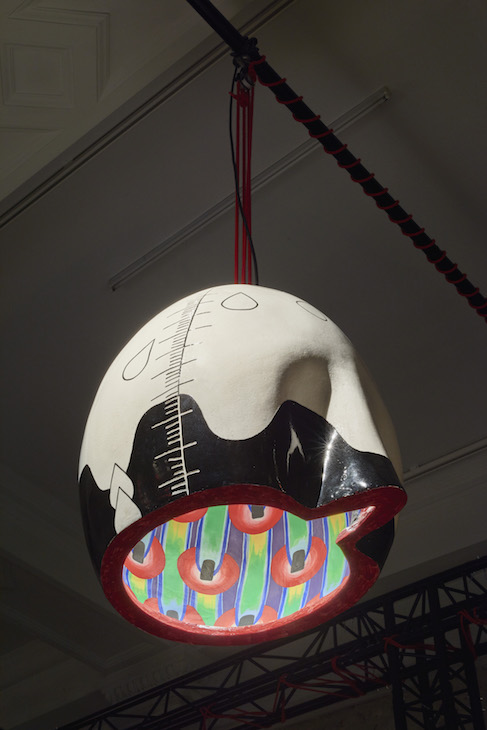
Emma Hart, ‘Mamma Mia’, installation view, Whitechapel Gallery. Photo: Thierry Bal
A jumble of traditions and allusions, bodies and emotions, Hart’s installation reminds me of the conclusion Bovenschen eventually reached in her search for a feminine aesthetic: that, rather than a single subject matter or medium, it is best defined as a ‘complicated process involving conquering and reclaiming, appropriating and formulating, as well as forgetting and subverting’. The specificity of the coded references in ‘Mamma Mia!’ is barely relevant. It’s all there already, in the collision of lovely decoration and violent emotion, of ceramic pots, kitchen utensils and visual poetry: a woman’s voice and work in the privileged public space of an exhibition that commands the viewer’s attention.
‘Mamma Mia!’ is at the Whitechapel Gallery, London, until 3 September 2017.
Unlimited access from just $16 every 3 months
Subscribe to get unlimited and exclusive access to the top art stories, interviews and exhibition reviews.


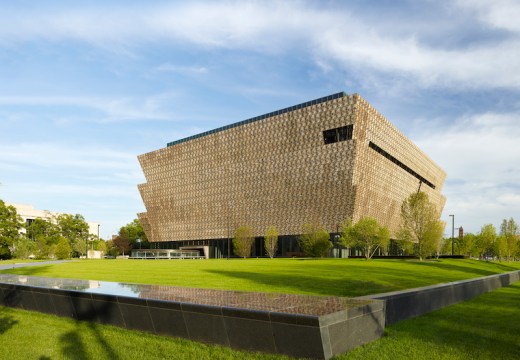
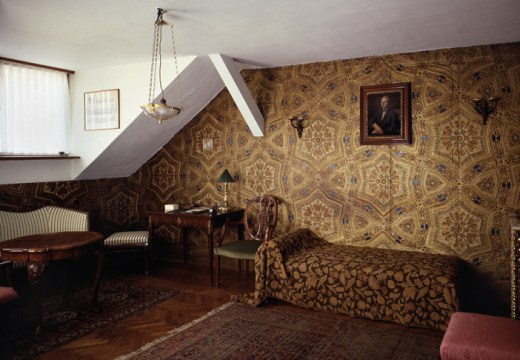









![Masterpiece [Re]discovery 2022. Photo: Ben Fisher Photography, courtesy of Masterpiece London](http://www.apollo-magazine.com/wp-content/uploads/2022/07/MPL2022_4263.jpg)
It’s time for the government of London to return to its rightful home